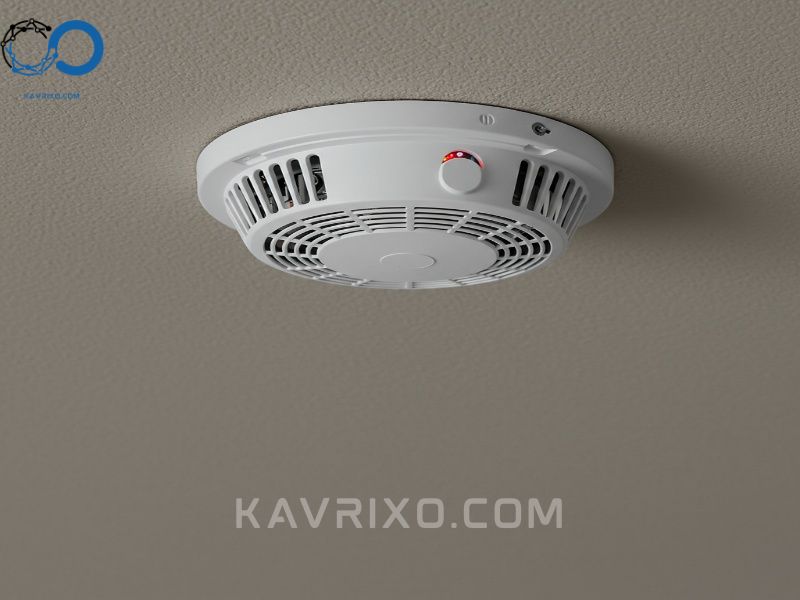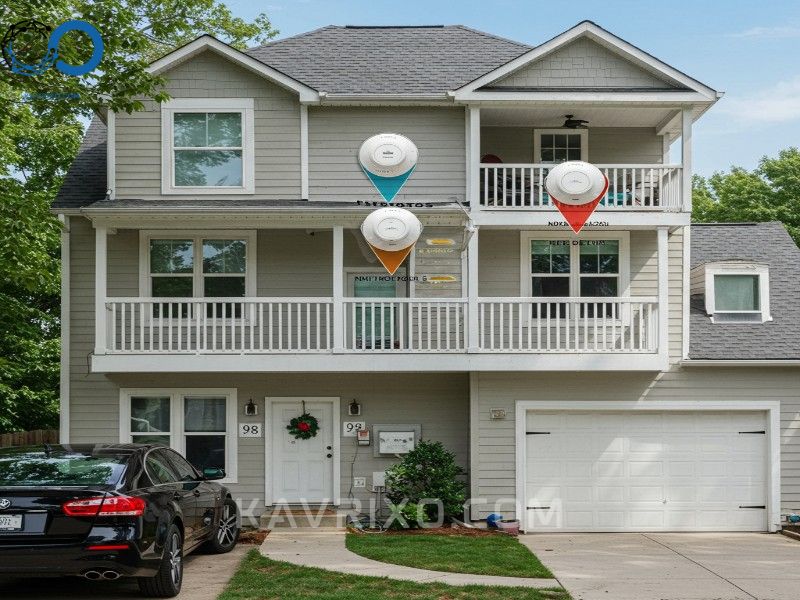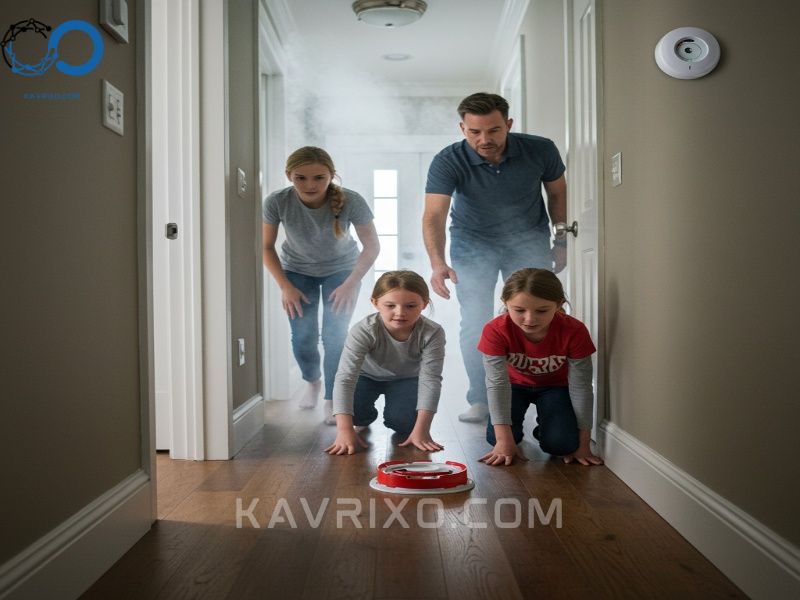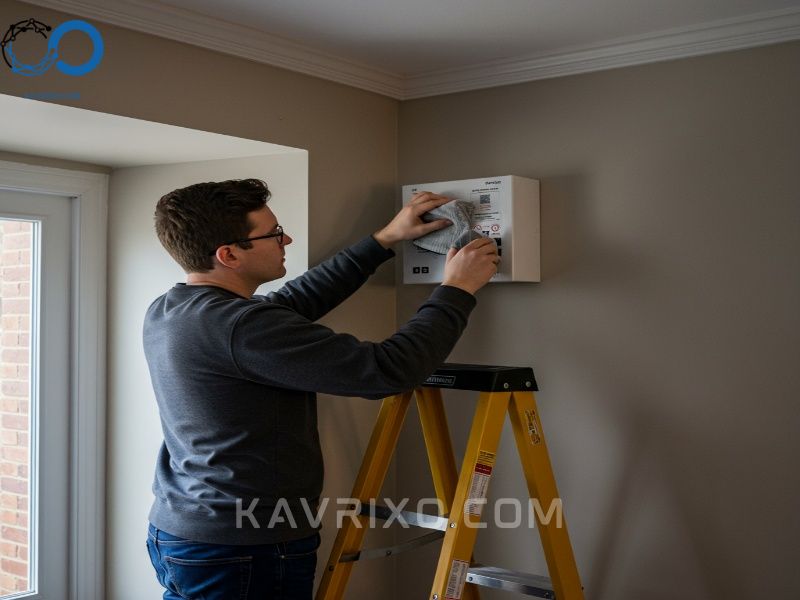When it comes to protecting what matters most, few investments are as critical or potentially life-saving as robust fire alarm systems for home use. While many homeowners focus heavily on burglary prevention, the threat of fire remains one of the most immediate and devastating risks to residential safety. Modern fire safety technology has moved far beyond the simple, battery-operated smoke detector of the past, offering sophisticated, interconnected, and intelligent solutions that provide precious minutes—or even seconds—of warning.
This comprehensive guide will walk you through the necessity, technology, installation standards, and maintenance requirements for selecting and implementing the best possible fire alarm systems for home protection, ensuring your family has the earliest warning and fastest response capability in an emergency.
Contents
- 1 Why Modern Fire Alarm Systems for Home Use are Non-Negotiable
- 2 Understanding the Core Components of Home Fire Monitoring Systems
- 3 The Technology Revolution: Smart Home Security Fire Alarm Systems
- 4 Choosing the Right Fire Alarm Systems for Home: Key Selection Criteria
- 5 Strategic Placement and Installation Best Practices
- 6 Maintaining Your Fire Alarm Systems for Home: A Safety Checklist
- 7 Conclusion: Investing in Peace of Mind
Why Modern Fire Alarm Systems for Home Use are Non-Negotiable
The tragic reality is that residential fires spread faster than ever before. Modern construction materials and synthetic furnishings burn hotter and quicker, significantly reducing the time occupants have to escape. What was once a 10-15 minute window decades ago is often now less than three minutes. This rapid escalation necessitates immediate and reliable detection.
The Evolving Threat Landscape
Traditional safety metrics are rapidly changing. Fires are no longer just slow-burning structural incidents; they often involve electrical faults or flammable materials that produce dense, toxic smoke almost instantly.
A top-tier home fire monitoring system isn’t merely designed to sound an alarm; it’s designed to identify the type of fire and communicate that threat effectively, both within the home and externally to monitoring services. For instance, a system that detects a rapid temperature spike in the garage (indicating a fuel or chemical fire) requires a different response profile than one detecting slow, smoldering smoke in a bedroom. The complexity of modern residential environments demands a sophisticated, multi-sensor approach.
Legal and Insurance Implications of Neglect
While the primary motivation for installing superior fire alarm systems for home safety is personal protection, there are crucial legal and financial factors to consider. Building codes in most jurisdictions mandate specific types of detectors and placement—usually hardwired, interconnected units in newer constructions. Failure to adhere to these local codes can lead to complications during renovation or sale.
Furthermore, insurance providers often offer reduced premiums or require proof of adequate fire detection and a professional home fire monitoring system to cover high-value homes. In the event of a fire, if the detection system was non-functional, outdated, or improperly installed, it could potentially complicate or delay claim payouts. Investing in NFPA (National Fire Protection Association) compliant equipment is not just smart—it’s responsible financial practice.

Understanding the Core Components of Home Fire Monitoring Systems
A truly effective home fire monitoring system relies on more than one type of sensor. Different sensors are designed to detect different characteristics of a fire, maximizing the chances of early detection regardless of the source or stage of the incident.
Smoke Detectors: Ionization vs. Photoelectric vs. Dual Sensor
The debate between ionization and photoelectric detectors is fundamental to understanding effective fire protection.
Ionization Smoke Detectors
These detectors use a small amount of radioactive material to create an electrical current flow between two plates. When smoke particles enter the chamber, they disrupt the current, triggering the alarm.
* Best For: Fast-flaming fires (e.g., kitchen grease fires, paper fires) that produce tiny smoke particles.
* Drawback: Prone to nuisance alarms from cooking fumes or steam.
Photoelectric Smoke Detectors
These devices use a light source and a sensor placed at an angle. When smoke particles enter the chamber, they scatter the light beam, directing some light onto the sensor, which triggers the alarm.
* Best For: Slow, smoldering fires (e.g., upholstered furniture burning, electrical wiring faults) that produce large, visible smoke particles.
* Drawback: May react slightly slower to fast-flaming fires compared to ionization types.
Dual-Sensor Alarms (The Modern Standard)
For comprehensive protection, most experts and safety organizations now recommend dual-sensor alarms, which combine both ionization and photoelectric technologies in one unit. This ensures the system is optimized to detect both fast and slow-burning fires, offering the broadest possible coverage. When selecting fire alarm systems for home, prioritize dual-sensor technology.
Heat Detectors and Their Role in Kitchens and Garages
Smoke detectors are typically not suitable for areas where smoke or steam is regularly present, such as kitchens, laundry rooms, or unfinished garages. In these locations, a heat detector is the appropriate choice.
Heat detectors function in two primary ways:
1. Fixed Temperature: Triggers when the ambient temperature reaches a specific, high threshold (usually 135°F or higher).
2. Rate-of-Rise: Triggers if the temperature increases by a certain amount (e.g., 15°F) within a short period (e.g., one minute), even if the fixed temperature threshold hasn’t been reached.
A combination of both fixed and rate-of-rise technology provides maximum sensitivity in high-risk, non-living areas. These devices are essential components of a complete home fire monitoring system because they prevent false alarms in “smoky” environments while still providing immediate warning of intense heat events.

Carbon Monoxide (CO) Detection Integration
While technically not a fire alarm, Carbon Monoxide (CO) detection is an inseparable element of modern residential safety. CO is an odorless, colorless, toxic gas produced by incomplete combustion (furnaces, water heaters, cars, fireplaces).
Leading fire alarm systems for home safety often integrate CO detection into the same unit as the smoke detector, providing a two-in-one safety device. Placement is crucial: CO alarms must be installed near sleeping areas and on every level of the home. Integrating CO monitoring ensures that the home security fire alarm system addresses the full spectrum of combustion-related residential threats.
The Technology Revolution: Smart Home Security Fire Alarm Systems
The advent of smart home technology has profoundly impacted residential fire safety. Today’s devices offer connectivity, remote access, and integration that dramatically improve response times and overall peace of mind.
Connectivity and Remote Notifications
The core advantage of smart home security fire alarm systems is their ability to communicate outside the physical structure. If a fire starts while the family is away, traditional alarms are useless. Smart systems, however, utilize Wi-Fi or cellular connections to immediately send notifications to homeowners’ smartphones.
These notifications typically specify the exact location of the alarm (e.g., “Smoke detected in the basement”) and often include status updates. This remote access allows homeowners to confirm the alarm and contact emergency services much faster than relying solely on neighbors hearing an external siren.
Interconnected Systems (Wired vs. Wireless)
Interconnection is perhaps the most critical feature of modern fire alarm systems for home. When one alarm sounds, all alarms in the house sound simultaneously. This is crucial in large or multi-story homes where a fire starting in the basement might not be audible in an upstairs bedroom.
- Hardwired Interconnection: Required in most new construction, these systems are wired directly into the home’s electrical system and include battery backup. The interconnection signal runs through dedicated wiring. They are highly reliable but challenging to install in existing structures.
- Wireless Interconnection: These systems link alarms via proprietary radio frequencies (RF). They are easier to install in existing homes (retrofitting) and offer comparable reliability to hardwired systems, provided the wireless signal strength is maintained throughout the residence.
For optimal safety, whether you choose wired or wireless, ensuring that every detection unit communicates with every other unit is paramount.

Integrating Fire Safety with Comprehensive Home Security
The line between fire detection and general home security is blurring. Many central security providers now offer integrated packages where the fire sensors are tied into the central monitoring hub alongside intrusion sensors, cameras, and access control.
The benefit of a fully integrated home security fire alarm system is centralized professional monitoring. If an alarm triggers, the monitoring station is instantly alerted and can verify the alarm and dispatch the fire department, often bypassing the need for human intervention from the homeowner, especially if they are away or incapacitated. This rapid, automated dispatch is often the difference between minor property damage and a total loss.
Choosing the Right Fire Alarm Systems for Home: Key Selection Criteria
Selecting the perfect fire alarm systems for home protection requires evaluating several practical and technical factors beyond just the sensor type.
Alarm Power Sources: Battery, Hardwired, and Backup
The power source determines reliability and maintenance requirements:
- Battery-Powered: Simple to install and inexpensive. However, they rely entirely on regular battery changes and are not interconnected unless they use wireless RF linkage. They are typically only recommended for older homes where hardwiring is prohibitively difficult, or as supplementary devices.
- Hardwired with Battery Backup: The industry standard. These are powered by the household electrical current, meaning they never run out of primary power. The battery backup (often 10-year sealed lithium) ensures operation during power outages. These systems are usually interconnected via wiring.
- 10-Year Sealed Battery Units: A popular, low-maintenance option. The battery is sealed inside the unit and lasts the full 10-year lifespan of the detector itself. When the battery dies, the entire unit is replaced. This eliminates the annual hassle of battery replacement and reduces the risk of non-functioning alarms due to neglect.
When considering comprehensive fire alarm systems for home, hardwired (with backup) or 10-year sealed battery units offer the highest reliability.
Decibel Levels and Alert Types
An alarm must be loud enough to wake heavy sleepers, even through closed doors. NFPA standards generally require alarms to produce at least 85 decibels (dB) at a 10-foot distance.
Modern systems also utilize more than just sound:
* Voice Alerts: Many smart systems use clear voice announcements (e.g., “Fire! Evacuate now!”) which can be less confusing than a standard piercing tone.
* Strobe Lights: Crucial for individuals who are hearing-impaired. These high-intensity, synchronized strobe lights are required in certain jurisdictions and are vital for accessible home fire monitoring systems.
Professional Monitoring vs. Self-Monitoring
The choice between how your system communicates externally is critical, especially for commercial-grade fire alarm systems for home.
- Self-Monitoring: The system alerts your phone, and you are responsible for contacting the fire department. This is cheaper but reliant on the homeowner’s availability and ability to act immediately.
- Professional Monitoring: A central station monitors your alarms 24/7. When an alarm triggers, the station attempts to contact you, and if they cannot verify the situation quickly, they immediately dispatch emergency services. This offers the fastest possible response time and is highly recommended for comprehensive safety. Professional monitoring is the hallmark of a true home fire monitoring system.

Strategic Placement and Installation Best Practices
Even the most expensive, technologically advanced fire alarm systems for home will fail if they are installed incorrectly. Adherence to NFPA 72 (National Fire Alarm and Signaling Code) is the gold standard for residential installation.
Where to Place Detectors (The “Must-Haves”)
NFPA 72 dictates mandatory placement locations:
1. Inside every sleeping room: To ensure occupants are alerted immediately.
2. Outside every sleeping area: In the immediate vicinity of the bedrooms (e.g., hallway).
3. On every level of the home: Including the basement and finished attic.
Key Installation Rules:
- Ceiling Mounts: If possible, mount alarms on the ceiling, at least 4 inches away from any wall.
- Wall Mounts: If mounting on a wall, the top of the alarm should be between 4 and 12 inches below the ceiling.
- Avoid Dead Air Spaces: Do not place alarms near windows, doors, air vents, or near the peak of vaulted ceilings, as these are “dead air” zones where smoke may not accumulate quickly.
Installation Requirements for Hardwired Systems
Installing hardwired fire alarm systems for home often requires specialized knowledge, as they must be connected to a dedicated circuit.
- Circuit Dedicated: The alarm system should ideally be on a circuit dedicated solely to the alarms, or on a combined circuit with lighting that cannot be inadvertently turned off.
- Interconnection Check: After installation, it is absolutely essential to test the interconnection. Triggering one alarm must immediately activate all others in the circuit.
Planning for Multi-Story Homes
Multi-story homes present unique challenges. The interconnection feature is vital here. If an alarm sounds in the basement, it must immediately alert the second and third floors. Furthermore, staircase tops and bottoms are crucial placement points, as they act as natural chimneys for smoke and heat.
For larger residences, repeaters or boosted wireless signals may be necessary to ensure seamless communication across large distances or through thick structural walls, maintaining the integrity of the home fire monitoring system.

Maintaining Your Fire Alarm Systems for Home: A Safety Checklist
Even the most advanced technology requires routine care. Neglecting maintenance is the single biggest cause of residential fire fatalities involving alarm systems—usually due to missing or dead batteries. Maintenance must be a consistent, scheduled priority.
Routine Testing Protocols
The NFPA recommends testing all smoke and CO detectors monthly.
- Monthly Test: Simply press the “Test” button on each unit. This tests the battery power and the functionality of the sensor and horn.
- Interconnection Test (Monthly): Ensure that when you test one unit, all other interconnected units also sound the alarm. If an alarm fails to sound, the interconnection link needs immediate repair.
Battery Replacement Schedules
For battery-powered or hardwired systems with removable battery backups:
- Annual Replacement: Replace standard 9-volt or AA backup batteries at least once a year. A common practice is to replace them when daylight saving time changes (the “Change Your Clock, Change Your Battery” campaign).
- Low-Battery Warning: Never ignore the chirping sound. This is the unit’s explicit warning that the battery is failing. Silence the chirp only after the battery has been replaced.
For 10-year sealed units, the maintenance is simpler, but the unit replacement schedule is absolute.

Understanding Sensor Lifespan and Replacement
Fire alarms are not permanent fixtures; they have a finite lifespan. Over time, the internal sensing components (especially the radioactive material in ionization detectors or the optical chambers in photoelectric detectors) degrade or become compromised by dust and environmental factors.
- The 10-Year Rule: All smoke detectors, regardless of type or power source, must be replaced every 10 years. After a decade, the sensor reliability diminishes significantly.
- CO Alarm Lifespan: CO sensors typically have a shorter lifespan, often 5 to 7 years. Check the manufacturer’s date stamped on the back of the unit and adhere strictly to the replacement timeline.
Maintaining a replacement schedule is just as important as the initial installation, ensuring your home security fire alarm remains fully effective for its intended purpose.
Conclusion: Investing in Peace of Mind
The installation and maintenance of reliable fire alarm systems for home safety is more than just compliance—it is a foundational pillar of home security. Whether you are upgrading an older property with interconnected wireless detectors or designing a comprehensive, fully integrated home fire monitoring system for new construction, the technology available today provides unmatched protection.
By choosing dual-sensor technology, ensuring full interconnection across all levels, integrating CO detection, and adhering to strict maintenance schedules, you are not merely buying a device; you are securing precious time—the most valuable commodity when fire strikes. Invest wisely in your fire safety infrastructure today to safeguard your family and property for years to come.
